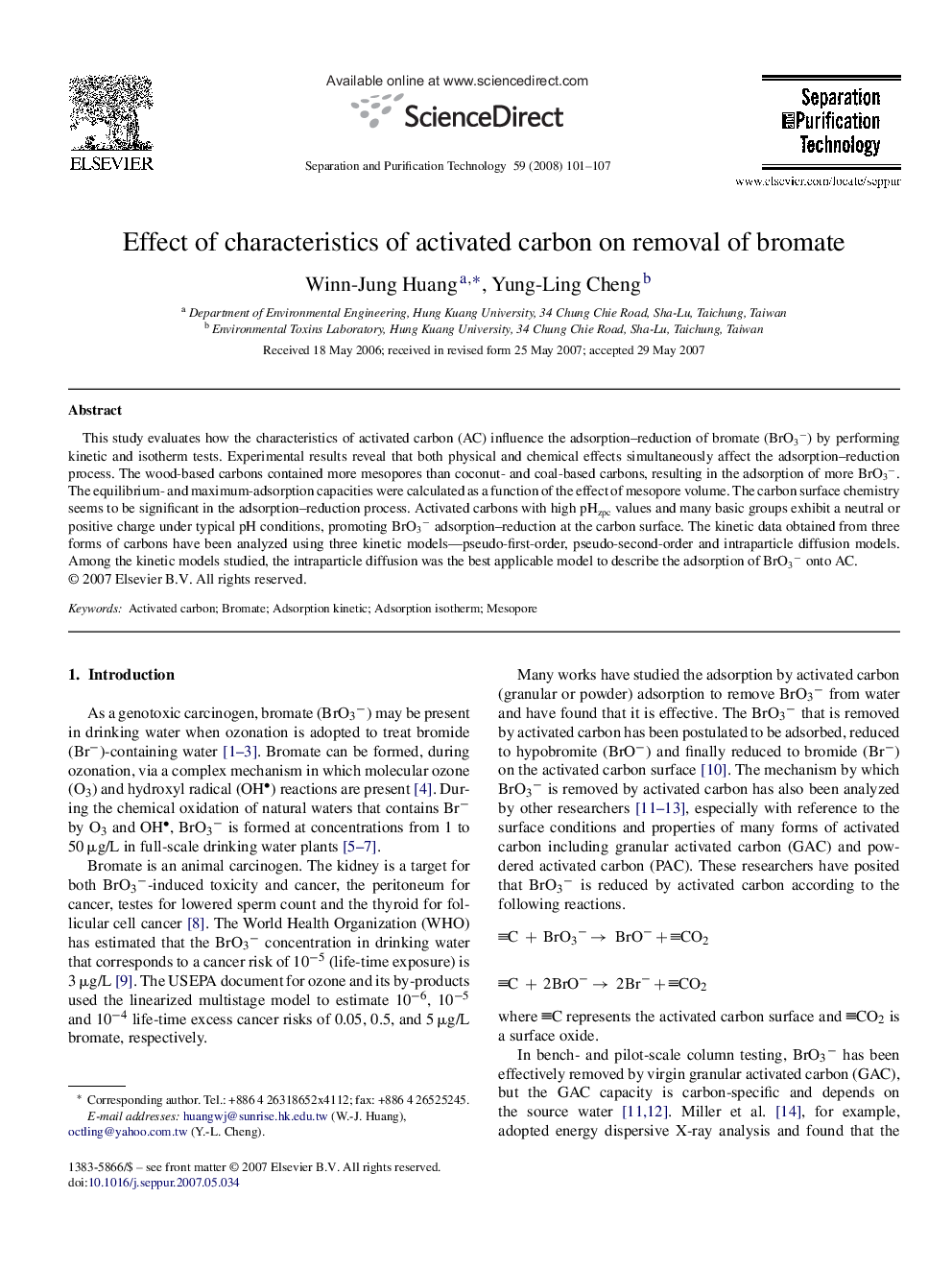| کد مقاله | کد نشریه | سال انتشار | مقاله انگلیسی | نسخه تمام متن |
|---|---|---|---|---|
| 643248 | 884363 | 2008 | 7 صفحه PDF | دانلود رایگان |

This study evaluates how the characteristics of activated carbon (AC) influence the adsorption–reduction of bromate (BrO3−) by performing kinetic and isotherm tests. Experimental results reveal that both physical and chemical effects simultaneously affect the adsorption–reduction process. The wood-based carbons contained more mesopores than coconut- and coal-based carbons, resulting in the adsorption of more BrO3−. The equilibrium- and maximum-adsorption capacities were calculated as a function of the effect of mesopore volume. The carbon surface chemistry seems to be significant in the adsorption–reduction process. Activated carbons with high pHzpc values and many basic groups exhibit a neutral or positive charge under typical pH conditions, promoting BrO3− adsorption–reduction at the carbon surface. The kinetic data obtained from three forms of carbons have been analyzed using three kinetic models—pseudo-first-order, pseudo-second-order and intraparticle diffusion models. Among the kinetic models studied, the intraparticle diffusion was the best applicable model to describe the adsorption of BrO3− onto AC.
Journal: Separation and Purification Technology - Volume 59, Issue 1, 1 February 2008, Pages 101–107